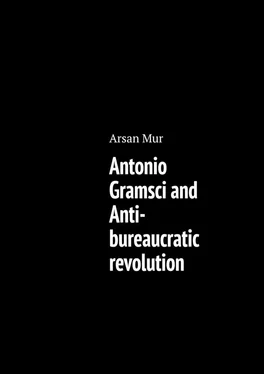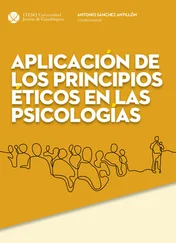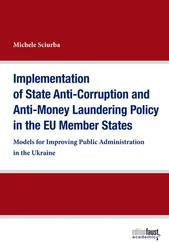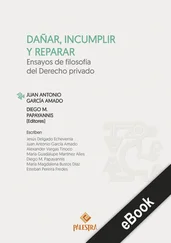Arsan Mur - Antonio Gramsci and Anti-bureaucratic revolution
Здесь есть возможность читать онлайн «Arsan Mur - Antonio Gramsci and Anti-bureaucratic revolution» — ознакомительный отрывок электронной книги совершенно бесплатно, а после прочтения отрывка купить полную версию. В некоторых случаях можно слушать аудио, скачать через торрент в формате fb2 и присутствует краткое содержание. ISBN: , Жанр: Прочая научная литература, на русском языке. Описание произведения, (предисловие) а так же отзывы посетителей доступны на портале библиотеки ЛибКат.
- Название:Antonio Gramsci and Anti-bureaucratic revolution
- Автор:
- Жанр:
- Год:неизвестен
- ISBN:9785005308733
- Рейтинг книги:5 / 5. Голосов: 1
-
Избранное:Добавить в избранное
- Отзывы:
-
Ваша оценка:
- 100
- 1
- 2
- 3
- 4
- 5
Antonio Gramsci and Anti-bureaucratic revolution: краткое содержание, описание и аннотация
Предлагаем к чтению аннотацию, описание, краткое содержание или предисловие (зависит от того, что написал сам автор книги «Antonio Gramsci and Anti-bureaucratic revolution»). Если вы не нашли необходимую информацию о книге — напишите в комментариях, мы постараемся отыскать её.
Antonio Gramsci and Anti-bureaucratic revolution — читать онлайн ознакомительный отрывок
Ниже представлен текст книги, разбитый по страницам. Система сохранения места последней прочитанной страницы, позволяет с удобством читать онлайн бесплатно книгу «Antonio Gramsci and Anti-bureaucratic revolution», без необходимости каждый раз заново искать на чём Вы остановились. Поставьте закладку, и сможете в любой момент перейти на страницу, на которой закончили чтение.
Интервал:
Закладка:
If we summarize the current state of the theory of revolution, today there is no single definition of revolution that is satisfactory and accepted by the majority. Not a single concept gives an answer to why revolutions are characteristic only of the era of capitalism and are unknown until the first bourgeois revolutions. There is no agreement on the causes or consequences of revolutions. The problem of typology (classification) of revolutions is one of the most difficult to develop a theory of revolution, where two extremes dominate: the simple division of revolutions into “western” and “eastern” or the promotion of a whole set of types, types and subspecies that suffer from a methodological point of view and in no way do not bring final clarity to the subject under study, in addition, a characteristic feature is the attempt to modernize various established theories and approaches and their resuscitation. The new generation of researchers in the theory of revolution will have to answer all the same questions and to break the movement in the circle of the same ideas and concepts, to look for fundamentally different approaches.
1.2 Marxist paradigm.
1.2.1 Lenin.
Studying this area of our analysis, we rely overall on a Marxist theoretical background, also involving other concepts for analysis. Marxism in this context acts as a conceptual basis, therefore we pay special attention to the theses of Lenin, as the author who was most involved in the process of the formation of a revolutionary subject.
Marxism gave the revolution the role of the locomotive of history, the substantial meaning in history, and deprived the idea of the sacred halo’s social processes. The Marxist understanding of the revolution has become the most important paradigm for any way of studying them, therefore it seems important to consider the theory of revolution of V. Lenin as the most classical, orthodox and free from prejudice, and the theory of A. Gramsci as a vivid revisionist theory.
In his works, V. I. Lenin proved that the development and aggravation of the contradictions of imperialism – internal (economic crises, unemployment, intensification of the class and national liberation struggles, etc.) and external (intensification of the competitive struggle of international monopolistic associations, war, etc.). e.) – have as their natural consequence both bourgeois-democratic and socialist revolutions. Lenin developed an integral, harmonious theory of various types of revolutions in the era of imperialism. Unlike the Mensheviks and opportunists of the Second International, who mechanically transferred to the new conditions the characteristic features of bourgeois revolutions that took place in Western countries in past centuries, Lenin, on the basis of concrete historical analysis, showed that in the era of imperialism bourgeois revolutions have their own specific features and laws.
On the experience of the First Revolution of 1905—1907 and the February Revolution of 1917 it was possible to make sure that the bourgeois-democratic revolution is significantly different from the previous bourgeois revolutions, firstly, in its driving forces and, secondly, in the forms and objectives of the struggle. The driving forces of the bourgeois-democratic revolution are the working class and the peasantry. The enemies of the revolution were not only the landowners, but also the big bourgeoisie. Revealing the dialectics of the first bourgeois-democratic revolution in Russia, Lenin wrote: “The peculiarity of the Russian revolution lies precisely in the fact that it was bourgeois-democratic in its social content, but proletarian in its means of struggle.” In the new historical conditions, the issue of the development of the bourgeois-democratic revolution into a socialist one has become urgent. The Mensheviks metaphysically divorced the socialist revolution from the bourgeois-democratic revolution; they did not see the dialectic of one growing into another. Lenin thoroughly criticized the Menshevik dogmas and contrasted them with the scientifically based theory of the transformation of the bourgeois-democratic revolution into a socialist one. “The proletariat must carry out the democratic revolution to the end, joining the mass of the peasantry in order to crush by force the resistance of the autocracy and paralyze the instability of the bourgeoisie” [Сталин, 117].
The proletariat must accomplish a socialist revolution, joining a mass of semi-proletarian elements of the population to crush the resistance of the bourgeoisie by force and paralyze the instability of the peasantry and the petty bourgeoisie. An analysis of the peculiarities and patterns of imperialism led Lenin to a new conclusion regarding the ways of realizing the socialist revolution.
As you know, Marx and Engels believed that a socialist revolution can only triumph simultaneously in all the major capitalist countries or in most of them and cannot win in a single country. This position of Marx and Engels stemmed from an analysis of the laws governing the development of pre-monopoly capitalism.
In the era of imperialism, its omnipotence is undermined by the aggravation of contradictions and the growth of the labor and national liberation movement. The contradictions between the imperialist countries have grown significantly, which creates the possibility of a split in the combined forces of imperialism. Creating a new theory of the socialist revolution, Lenin primarily proceeded from the law of uneven economic and political development in the era of imperialism. “The unevenness of economic and political development,” wrote Lenin, “is the absolute law of capitalism. It follows that the victory of socialism is possible initially in a few or even in one, separately taken, capitalist country” [Ленин, 65].
Since the victory of the socialist revolution in one country, taken separately, inevitably provokes the desire on the part of the bourgeoisie of the imperialist states to defeat the victorious proletariat, the possibility of a new type of war follows from here. During them, the victorious proletariat in alliance with the working masses of the peasantry, with the support of the proletarians of other countries, must defend their socialist fatherland with arms. Summarizing the experience of revolutions in Russia and in other countries, Lenin developed the question of the ways and forms of development of the socialist revolution. Depending on the specific historical conditions, on the correlation of class forces, the socialist revolution takes place in a non-peaceful way, i.e. in the form of the armed struggle of the proletariat and the workers following it with the exploiters, or peacefully, that is, without an armed uprising, without a civil war, or in a dialectical connection and mutual transitions of both forms of development of the revolution.
To ensure such a development of the revolution, the Bolsheviks considered it possible to agree to a temporary agreement with the Mensheviks and Socialist-Revolutionaries. Lenin wrote: “Only in the name of this peaceful development of the revolution – an opportunity extremely rare in history and extremely valuable, an opportunity extremely rare, only in the name of its Bolsheviks, supporters of the world revolution, advocates of revolutionary methods, can and should, in my opinion, go to such a compromise” [Ленин, 41]. The new theory of the socialist revolution developed by V. I. Lenin was a vivid example of the creative development of Marxism, a classic example of scientific foresight. All the provisions of the Leninist theory of the socialist revolution, developed during the First World War, were confirmed by the course of events. Initially, the socialist revolution triumphed in one single country, in Russia. The revolutionary proletariat of Russia had to endure a long war against internal reaction and the imperialist states.
Читать дальшеИнтервал:
Закладка:
Похожие книги на «Antonio Gramsci and Anti-bureaucratic revolution»
Представляем Вашему вниманию похожие книги на «Antonio Gramsci and Anti-bureaucratic revolution» списком для выбора. Мы отобрали схожую по названию и смыслу литературу в надежде предоставить читателям больше вариантов отыскать новые, интересные, ещё непрочитанные произведения.
Обсуждение, отзывы о книге «Antonio Gramsci and Anti-bureaucratic revolution» и просто собственные мнения читателей. Оставьте ваши комментарии, напишите, что Вы думаете о произведении, его смысле или главных героях. Укажите что конкретно понравилось, а что нет, и почему Вы так считаете.












